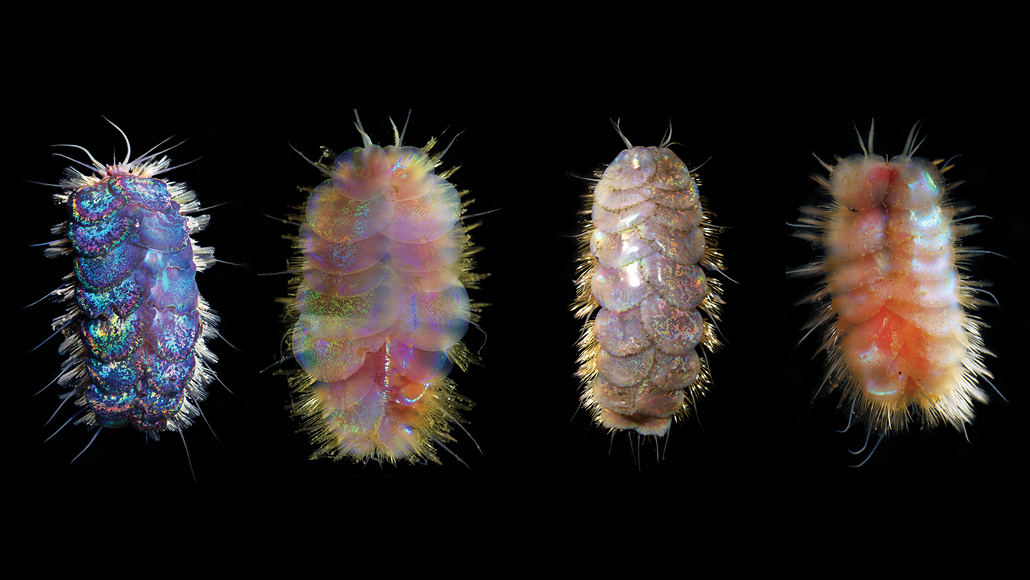New species of scaly, deep-sea worms named after Elvis have been found
The animals’ iridescent scales are reminiscent of sequins on the iconic jumpsuits of ‘The King’

The four species of deep-sea creatures collectively known as “Elvis worm” (one of each species shown) may be small — just millimeters to centimeters long. But they make quite the impression with their iridescent, sequinlike scales.
A.S. Hatch et al/ZooKeys 2020